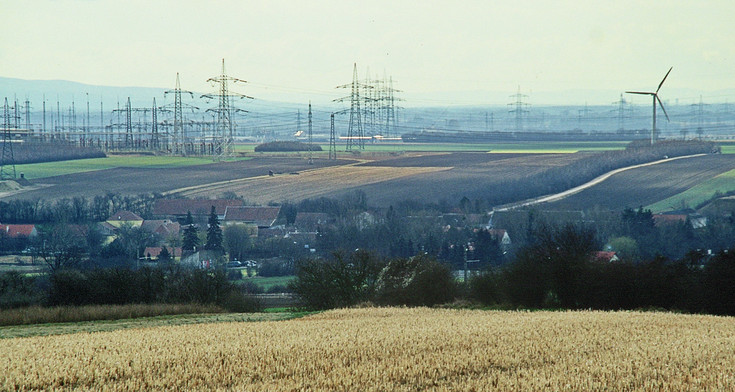Energy-related Spatial Planning

Energy-related spatial planning is a subfield of spatial planning and deals with the spatial dimension of energy consumption and energy supply. It plays a substantial role in fulfilling international climate protection goals. Equivalent to the energy efficiency of buildings there are also energy efficient spatial and settlement structures, which can be characterized by a mix of functions, sensible density, short paths and compactness.
Spatial dimensions of energy supply lie in identifying and developing sites for energy production systems, power distribution installations and energy storage systems. In addition, areas for the production of renewable resources need to be secured. This should be planned in such a way that conflicts of land use are anticipated and minimized. Research at IRUB has shown that energy efficient spatial and settlement structures can also easily be supplied with (grid-bound) renewable energy.
The number of conducted research projects and publications in this area is large. For further information please contact Univ.Prof. Dr. Gernot Stöglehner, Dipl.-Ing. Dr.nat.techn. Georg Neugebauer, DDipl.Ing. Dr.nat.techn. Susanna Erker and Dipl.-Ing. Dr. Lore Abart-Heriszt
Exemplary Publications
Stoeglehner, G., Emrich, H., Koch, H., Narodoslawsky, M. (2017): Impulse für eine kommunale Energieraumplanung. Herausgegeben vom Bundesministerium für Land- und Forstwirtschaft, Umwelt und Wasserwirtschaft im Rahmen des Programmes klimaaktiv Mobil. www.klimaaktiv.at/mobilitaet/mobilitaetsmanagem/erpl-leitfaden.html
Kollmann, R; Neugebauer, G; Kretschmer, F; Truger, B; Kindermann, H; Stoeglehner, G; Ertl, T; Narodoslawsky, M (2017): Renewable energy from wastewater - Practical aspects of integrating a wastewater treatment plant into local energy supply concepts. Journal of Cleaner Production 155: 119-129.
Stoeglehner, G., Neugebauer, G., Erker, S., Narodoslawsky, M. (2016): Integrated Spatial and Energy Planning: Supporting Climate Protection and the Energy Turn with Means of Spatial Planning. Springer; ISBN: 978-3-319-31868-4.
Camargo, LR; Zink, R; Dorner, W; Stoeglehner, G (2015): Spatio-temporal modeling of roof-top photovoltaic panels for improved technical potential assessment and electricity peak load offsetting at the municipal scale. Computers, Environment and Urban Systems 52: 58-69.
Neugebauer, G; Kretschmer, F; Kollmann, R; Narodoslawsky, M; Ertl, T; Stoeglehner, G. (2015): Mapping Thermal Energy Resource Potentials from Wastewater Treatment Plants. Sustainability 7(10): 12988-13010.
Stoeglehner, G., Baaske, W., Mitter, H., Niemetz, N., Kettl, K.H., Weiss, M., Lancaster, B., Neugebauer, G. (2014): Sustainability appraisal of residential energy demand and supply - a life cycle approach including heating, electricity, embodied energy and mobility. Energy, Sustainability and Society, 4:24, 1-13.
Felber, G., Stoeglehner, G. (2014): Onshore wind energy use in spatial planning – a proposal for resolving conflicts with a dynamic safety distance approach. Energy, Sustainability and Society, 4:22, 1-9.
Stoeglehner, G., Narodoslawsky, M. (2012): Integrated optimization of spatial structures and energy systems. In: Stremke, S., Van den Dobbelsteen, A. (Eds): Sustainable Energy Landscapes: Designing, Planning and Development. Boca Raton: Taylor & Francis.
Stoeglehner, G., Narodoslawsky, M. (2012): Energy-conscious planning practice in Austria: Strategic planning for energy-optimized urban structures. In: Stremke, S., Van den Dobbelsteen, A. (Eds): Sustainable Energy Landscapes: Designing, Planning and Development. Boca Raton: Taylor & Francis.
Stöglehner, G., Niemetz, N., Kettl, K.-H. (2011): Spatial dimensions of sustainable energy systems: new visions for integrated spatial and energy planning. Energy, Sustainability and Society 1(1): 1-9.
